WorthPlaying: Who has the honor to speak with us? State your name, rank and occupation!
I'm Nick Ricks, and I'm an executive producer at Traveller's Tales Games.
WP: Tell us a little about the LEGO The Hobbit video game. Is this just going to be more of LEGO The Lord of the Rings, with new characters and new locations? Have you added some new gameplay mechanics to the adventure? What can we expect?
NR: You can expect everything that people loved in LEGO The Lord of the Rings and more. The first thing we do when we try to start a new LEGO game is try to understand and distill what's different about the experience. What makes a super hero adventure different from, say a wizard's adventure? For LEGO The Hobbit, we've thought about what that distillation might be. In this case, it's all about the dwarves. Dwarves, dwarves and more dwarves.
WP: Dwarves, dwarves, dwarves. One of the issues some have with reading the book and watching the movies is that there are so many dwarves, so keeping track of them can be an issue. You had a lot of characters in LEGO The Lord of the Rings. How do you manage the characters for the player in LEGO The Hobbit?
NR: In that respect, we've taken inspiration from Peter Jackson and the New Line Cinema films, where they actually divide the party up into various different sections. You'll see in Goblin Town, as the party splits up and divides, you'll take control of one section of the of party, and in the background, we'll have the AI battling the goblins, so you still get that breadth of gameplay. Each of the dwarves has their own unique abilities, in classic LEGO style, but rather than overburden the interface and provide something that is too challenging for younger gamers, by dividing the party, we offer the full range of characters while making sure players aren't overwhelmed by the choices they are presented. In that respect, we pay homage. We are standing on the shoulders of giants, working with Peter Jackson.
WP: You mentioned Peter Jackson. Is it safe to say that LEGO The Hobbit is based on the movies rather than the books? Will we see some of Jackson's original characters in LEGO The Hobbit?
NR: Yes, very much so. As with our previous games, this is very much a game of the films. The younger audience that we aim for; they are obviously going to be more familiar with the films, and so what we've done is ensure that those cinematic set pieces that Peter Jackson is famous for are re-created in LEGO style. At the same time, there are hints, there are bonus items, there are secrets that broader fans of the fiction will understand and pick up on throughout the rest of the game.
WP: One of the big questions is, you're releasing the game before the last film in the series is out. "An Unexpected Journey" and "The Desolation of Smaug" only cover two-thirds of the book. How are you handling that with the game? Will the final film be sold as downloadable content? Will there be a LEGO The Hobbit 2? How are you going to handle telling what is essentially an incomplete story?
NR: Well, LEGO The Hobbit is a full-sized game. It has the same scope, the same size as LEGO The Lord of the Rings. Indeed, our QA team is the barometer which I always use to judge. It's taken them about 40 hours to play through the whole game, and they know exactly where to go and what to do. But you've asked a very good question about the third film. We've got some extremely exciting ideas about it, and I am literally almost bursting at the seams to tell you about them, but I'm afraid there's nothing to say about that today.
WP: Not even details about a possible bonus or preview level, like you've done in the past with other LEGO games?
NR: It's, it's, I'm, afraid no. *sighs* Monica [the WB PR rep sitting in on the interview] would tell me off if I said.
WP: What about multiplayer? In one of the LEGO games, you supported online multiplayer, but otherwise, all the LEGO games have been purely offline multiplayer. Why not support online play?
NR: At the end of the day, we want to focus our attention on the idea of young gamers and their families playing together, and the best way for them to play these games is side-by-side on the couch. Throughout all our games, we have the ability to drop in and drop out at any time. That just suits us. It suits the way we think the LEGO games are best played. At any time throughout all our games, if someone else wants to join in, they can simply do that. If a younger gamer is finding something a little more challenging, they can drop out and have someone sitting next to them help them through it. That kind of dialogue, that discourse, wouldn't be possible in an online setting. That's why we focused on the co-op gameplay as it is.
WP: You mentioned younger gamers, but LEGO bricks and the LEGO games have also been very adult-friendly. When you first started the LEGO series, was it marketed toward kids, or were you also keeping the 30- to 40-year-old gamers in mind when designing the games? If not, did it surprise TT when you found out how much adults enjoyed the titles?
NR: You're absolutely right. There is a certain duality to the appeal. The core of the idea is great games for young gamers and their families. It's not just simply for kids; older gamers need to be able to experience it as well, and we find that some games, if they're aiming just at children, can sometimes aim too low. I think children are a lot smarter, a lot more able to understand and appreciate content that is aimed at something a little higher than they're used to. It's always been our aim to have that duality of appeal, and certainly parodying the source material, whether it be "The Hobbit" or "The Lord of the Rings," provides that because you have an incredibly compelling story with amazing characters and locations, which an older audience can understand and they can understand the parodies thereof. The younger gamers just see it as an exciting story with cool characters and villainous bad guys. If it wasn't for that duality of appeal, I don't think we would have had the longevity that the LEGO games have had thus far.
WP: Speaking of jokes and humor, it wasn't until LEGO Batman 2 and LEGO The Lord of the Rings that you had voices in the game. Previously, it was all animations, pantomimes and a few grunts and groans. Has the addition of voices changed the way that your team handles humor? Or is it more of the same, just with a different set of sound effects?
NR: It has certainly provided a new challenge. There is a certain irreverence and charm to the miming characters. There was a lot of humor layered into that. If you're presenting the theatrical dialogue, that does present a significant challenge. The plus side is that you obviously can evoke a lot more drama, a lot more emotion, when you have these world-class actors like Ian McKellen, Christopher Lee or Ian Holm delivering their dialogue. There is an inherent humor in that if Gandalf is calling to you, "RUN!" but that's delivered through a minifig, that's inherently funny. Equally, there are some times where the mime would give you more opportunities to play around. There are plenty of new ways of looking at the dialogue and re-interpreting it in a humorous way that we wouldn't have had the opportunity to do if we were doing it in mime.
WP: The LEGO Group started up the CUUSOO program a short while back to give fans the opportunity to vote on new ideas, and the most popular ones would become actual toys. With the LEGO games, you've worked on a lot of large properties: Batman, Harry Potter, The Hobbit, Marvel and Star Wars. If you open it up, forget licensing worries and such, what would be your dream LEGO game?
NR: It would be LEGO The Hobbit. It really would because it's the most exciting story that's available at the moment. There's such a rich vein of excitement, of characters. It's really current; the story is about generic human truths. It's about the dwarves being cast out, relying upon their friends, their collaboration in adversity, and that's what makes a compelling story. Being able to capture that in LEGO style is something that's really exciting. Right now, I couldn't think of anything else I'd rather be doing than making LEGO The Hobbit.
WP: Is there anything that we haven't talked about that you wanted to mention?
NR: Actually, that point I was just talking to is very important. What we try to do with each new LEGO game is try to understand what makes each property different and then distill that into the gameplay experience. For us, that sense of camaraderie that the dwarves have when they're ostracized, when they're kicked out of their homeland and how they work together is what we felt was one of the more important parts of the story. So how do we distill that down into gameplay? For us, it was the idea of buddying up, of having the dwarves working together. That not only spoke to the story, but also it works classically within LEGO gameplay because LEGO gameplay is all about combining and joining things together. You'll see throughout the game that there are numerous times when different characters, who all have their own unique abilities, combine these abilities to overcome the obstacles and adversities that we put in front of them. That's what's at the core of LEGO The Hobbit. I call it dwarves, dwarves and more dwarves. Everything you do is all about the dwarves. Whether it is mining for ore and gemstones, it's working together as a team or simply bashing heads together and knocking 10 kinds of "you know what" out of the goblins, and that's what the game is all about.
WP: Thanks a lot for your time.
More articles about LEGO: The Hobbit



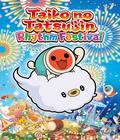
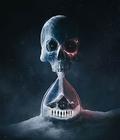
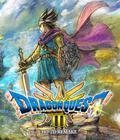
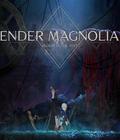



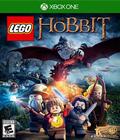 Following the story of the first two films, LEGO The Hobbit takes players on quests throughout Middle-earth. Join Bilbo Baggins, Gandalf the Grey, and Thorin Oakenshield and company in their exciting adventures toward the Dwarven Kingdom of Erebor.
Following the story of the first two films, LEGO The Hobbit takes players on quests throughout Middle-earth. Join Bilbo Baggins, Gandalf the Grey, and Thorin Oakenshield and company in their exciting adventures toward the Dwarven Kingdom of Erebor.